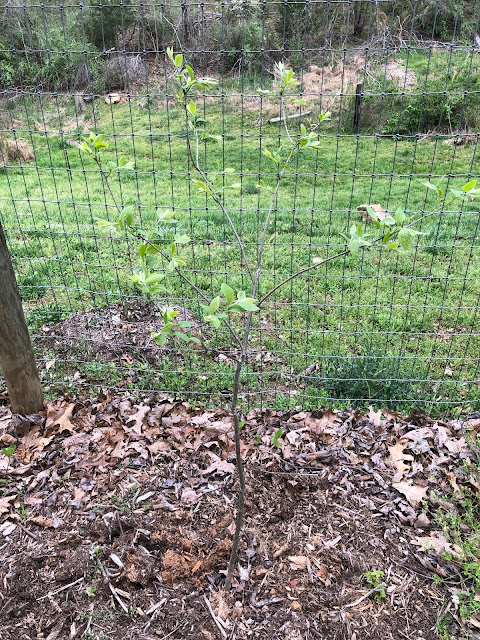I’d tung-oiled it two days before, and while that was satisfying, not nearly as much fun as putting color on, so I was excited to get started.
Echo hive is doing very well, and the girls were busy foraging when I got to the apiary. I set up my painting stuff and got to work. I realized I’d made the paint a bit too watery, but milk paint is so forgiving it’s not a big deal. If I’d been closer to the house, where the powder was, I might have added some more to thicken the paint a bit, but since I had plenty of paint and could do several coats, I opted to forge on.
I got one side painted when somehow the yogurt container slid from my hand and bright pink milk paint flew everywhere. ACKKKKK!
After a few moments of total frustration, I realized that because we’d put cardboard down to smother some weeds around the hive, the paint was pooling and not totally lost. Instead of cursing, I just continued to paint, dipping the brush in the pink pool and applying it as I would if it were still in my container.
I really didn’t think I’d be able to complete the entire exterior of the hive boxes (you don’t paint the insides) but guess what - somehow there was enough to do it, and even enough to add a second coat to most of the areas that needed one.
After not crying over spilt milk paint, this is what I have:
You can see the paint splattered on the bottom box legs, which initially I fretted over, but decided to let go. I also made a mistake and painted the handles which I’d meant to leave natural, but oh well. Thankfully milk paint is nontoxic and water based and the rain will wash away the paint on the ground with no ill effect and a bit of time. I’ll do a second coat today and build the color up, but even as is, I love it. Note the chicken feeders we use for providing water to the bees. We filled the bottom with stones so they can perch and drink without drowning. We have two of these and refill them as needed with no trouble at all. I noticed birds using them yesterday too!
Here’s a shot looking back toward Echo hive. I chose these colors because I love them separately but even more together. I also have a sapphire blue that will go on the third hive.
After using up all the paint I could sop up from the ground, I took my cherry soda and went to my chair in Poplar Folly. The view:











